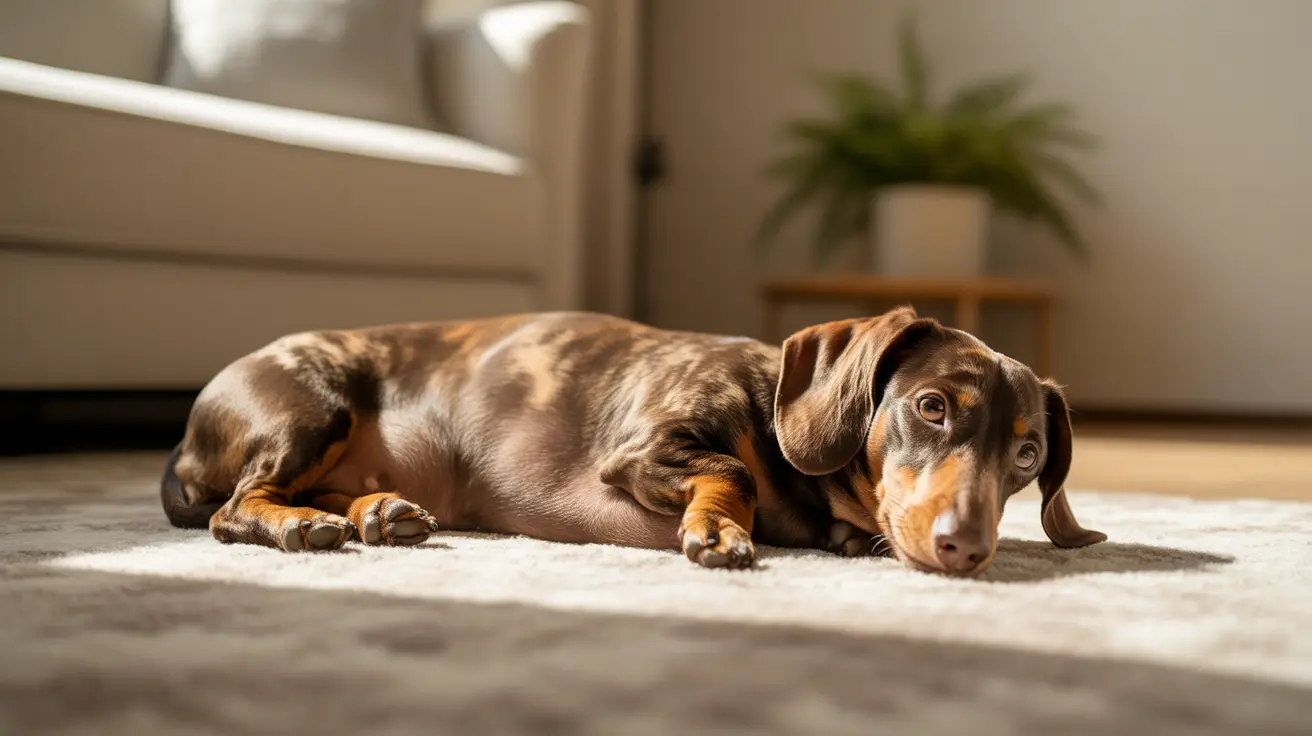If you've noticed your dog's fur changing color in spots, you're not alone. This common phenomenon can occur for various reasons, ranging from natural aging processes to underlying health conditions. Understanding why these changes happen is crucial for ensuring your pet's wellbeing and knowing when to seek veterinary care.
In this comprehensive guide, we'll explore the various causes of spotty fur color changes in dogs, discuss when these changes might indicate a health concern, and provide practical solutions for managing and preventing unwanted color variations.
Natural Causes of Fur Color Changes
Age-Related Changes
As dogs age, their fur naturally changes color, particularly around the muzzle and face. This graying process, similar to humans, is completely normal and typically begins around middle age. Some breeds may show these changes earlier than others, and it's generally not a cause for concern.
Sun Exposure and Environmental Factors
Extended exposure to sunlight can cause fur bleaching, particularly in dark-coated dogs. This often results in reddish or brownish patches, especially on areas that receive the most sun exposure. Seasonal changes and temperature variations can also influence coat color, particularly in double-coated breeds.
Health-Related Color Changes
Skin Conditions and Infections
Various skin conditions can cause spotty color changes in your dog's fur. Bacterial or fungal infections, allergies, and parasitic infestations may lead to discoloration along with other symptoms like itching, redness, or hair loss.
Hormonal Influences
Hormonal disorders such as hypothyroidism or Cushing's disease can affect fur color and texture. These conditions often cause patchy changes and may be accompanied by other symptoms like weight changes, lethargy, or skin problems.
Genetic and Breed-Specific Patterns
Some color changes are entirely normal and breed-specific. For example, Dalmatian puppies are born white and develop their characteristic spots as they mature. Similarly, some breeds naturally experience color changes throughout their lives due to genetic factors.
Nutrition and Lifestyle Impact
Poor nutrition can lead to changes in coat color and quality. Ensuring your dog receives a balanced diet rich in essential nutrients is crucial for maintaining healthy fur color and texture. Regular grooming also helps distribute natural oils and maintain uniform coloration.
When to Seek Veterinary Care
While many fur color changes are harmless, certain situations warrant professional attention. Contact your veterinarian if you notice:
- Sudden or dramatic color changes
- Accompanying symptoms like excessive scratching or hair loss
- Changes in behavior or energy levels
- Skin inflammation or irritation
Prevention and Management Tips
To help maintain your dog's natural coat color and health:
- Provide a high-quality, balanced diet
- Protect from excessive sun exposure
- Maintain regular grooming routines
- Schedule regular veterinary check-ups
- Address any skin issues promptly
Frequently Asked Questions
Why is my dog's fur changing color in spots or patches?
Dogs' fur can change color in spots due to various factors including aging, sun exposure, hormonal changes, skin conditions, or genetic predisposition. Some changes are natural and harmless, while others may indicate underlying health issues.
Can parasites or infections cause spotty color changes in my dog's fur?
Yes, parasites like mites or fleas, as well as bacterial or fungal infections, can cause spotty color changes in dog fur. These changes are often accompanied by itching, inflammation, or hair loss.
How do genetics influence spots and color changes in a dog's coat?
Genetics play a significant role in determining coat color and pattern changes. Some breeds are genetically programmed to develop spots or experience color changes as they age, while others maintain relatively stable coloring throughout their lives.
When should I be concerned about sudden or patchy fur color changes in my dog?
Be concerned if color changes are sudden, accompanied by skin irritation, excessive scratching, hair loss, or behavioral changes. These symptoms might indicate an underlying health issue requiring veterinary attention.
What steps can I take to prevent or manage my dog's fur changing color in spots?
Maintain good nutrition, regular grooming, and protection from excessive sun exposure. Address any skin issues promptly, and schedule regular veterinary check-ups to monitor your dog's overall health and coat condition.
Remember, while some fur color changes are perfectly normal, understanding the various causes helps you better monitor your dog's health and seek appropriate care when needed. When in doubt, always consult with your veterinarian for professional guidance.






